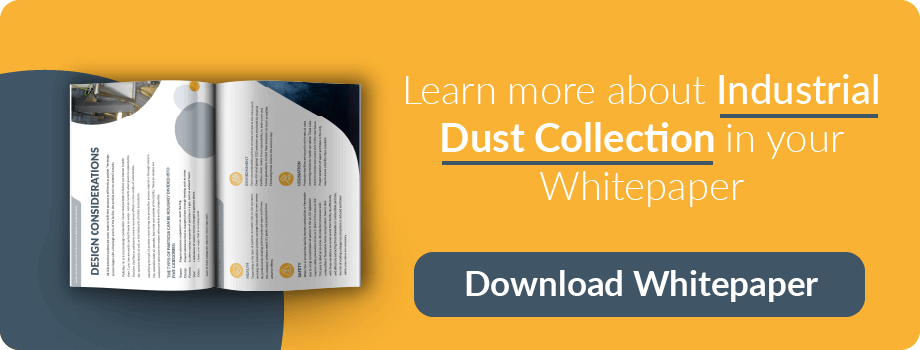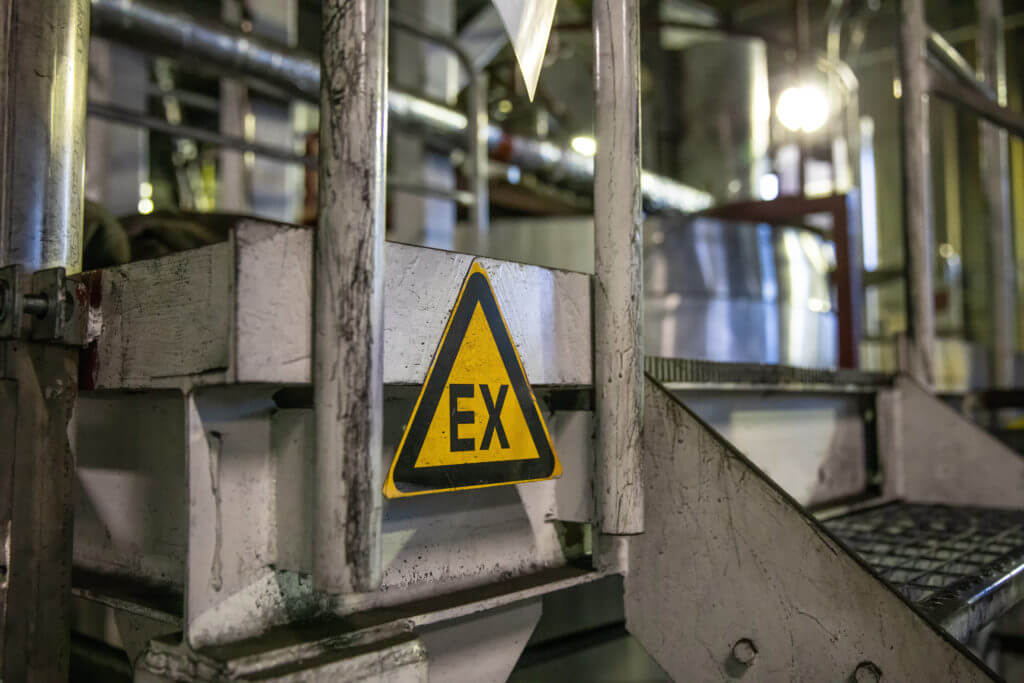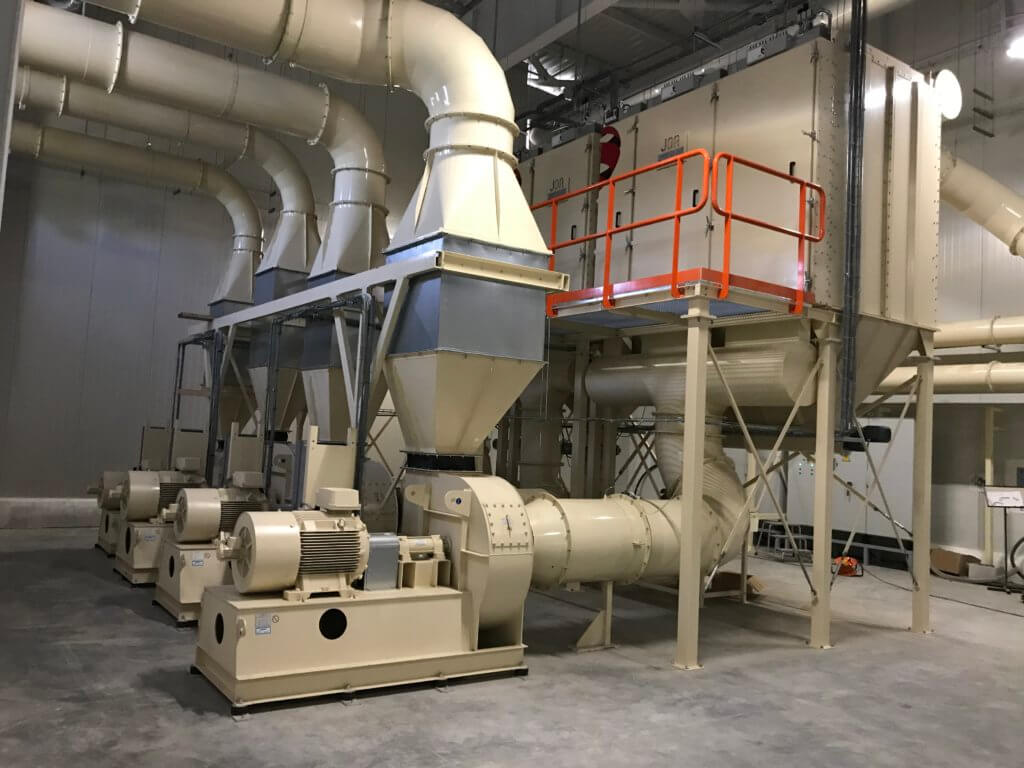In the bustling world of industrial manufacturing, air quality isn’t just about comfort, it’s a critical component of operational health and workplace safety. Local Exhaust Ventilation (LEV) systems stand at the forefront of safeguarding industrial environments from harmful airborne contaminants. This blog delves into the essence of LEV, its importance, functionality, and why JOA Air Solutions is your go-to partner for overcoming air quality challenges in the worldwide manufacturing industry.
Table of Contents
What is Local Exhaust Ventilation?
The definition of a Local Exhaust Ventilation (LEV) is a specialized system designed to remove airborne contaminants at their source before they can spread into the workplace environment. These contaminants include:
- Dust
- Mist
- Fumes
- Vapors
- Gases
All these contaminants can be hazardous to the health and safety when inhaled by operators. LEV is essential when creating workplace health and safety programs as it tries to protect operators from exposure to hazardous emissions. LEV systems are found in various industries like Food Production, Chemicals, Consumer Goods, Pharmaceutical, Plastics and many more.
Understanding Local Exhaust Ventilation Systems
Local Exhaust Ventilation (LEV) systems are sophisticated engineering controls designed to mitigate workplace exposure to hazardous substances. By capturing emissions at the source, LEV systems play a crucial role in maintaining a safe and healthy environment for workers. The effectiveness of an LEV system is dependent on its design and the seamless integration of its components, each serving a distinct purpose in the overall process of contaminant control.
How Local Exhaust Ventilation Works
LEV systems function by creating a flow of air at the source of emission. This airflow captures contaminants and transports them through ducting to filtration units, effectively removing them from the workplace atmosphere. The efficiency of an LEV system depends on the design of its components and the proper identification of the sources of contaminants. In general, a LEV systems consists of 4 main focal points:
- Extraction Hood Design
- Ducting System without clogging
- Filtration Unit (or Filter Unit)
- Fan Selection

Extraction Hood design
The first critical component of an LEV system is the hood. This is not a simple cover but a strategically designed capture mechanism that encloses or is placed near the point of contaminant generation. The hood’s design is pivotal; it must be positioned and shaped in such a way that it efficiently captures the pollutants without obstructing the work process. Various types of hoods are utilized, depending on the specific application, including canopy hoods, enclosing hoods, and extraction arms. The primary objective is to encase the contaminants effectively, preventing them from dispersing into the workplace air.
Ducting System without clogging
Once the contaminants are captured, they need to be transported to a safe disposal or filtration location. This is where ducting comes into play. Ducts are the conduits through which the contaminated air travels away from the workspace. The design of the ducting system is essential for maintaining effective airflow; it must minimize resistance and prevent any accumulation of particulates that could clog the system. The ductwork must be appropriately sized and configured to handle the volume and type of contaminants, ensuring efficient transport without leakage. To validate our designs, we use inhouse developed Air Technical Modeling Software. This ensures predictable results.
WEBINAR
Predict system performance with Air Technical Modeling. Build reliable extraction systems for dust & vapor. Watch the webinar!
Filtration Unit
The next component in the sequence is the air cleaner or filtration unit. This element of the LEV system is tasked with removing the contaminants from the air stream before it is either recirculated back into the workplace or expelled into the environment. The choice of air cleaning technology depends on the nature of the contaminants. Filters can capture particulates, while adsorbers, absorbers, or electrostatic precipitators may be used for gases and vapors. The air filtration unit efficiency is crucial for reducing the concentration of hazardous substances to acceptable levels, as defined by relevant health and safety standards.
Fan Selection
Finally, the fan is the driving force behind the LEV system. It creates the suction required to draw contaminated air into the hood, through the ductwork, and across the air cleaner. The fan’s capacity must be sufficient to overcome the resistance of the system and maintain an adequate flow rate to ensure contaminants are effectively captured and removed. The positioning of the fan, usually at the end of the system to avoid contamination of the fan blades, also plays a role in the system’s overall efficiency and maintenance requirements. The fan pushes the air eventually out of the system through the exhaust valve.
In conclusion, a Local Exhaust Ventilation system is more than just a series of connected components. It is a carefully engineered solution designed to control hazardous emissions at their source, thereby protecting workers’ health and contributing to a safer work environment. The success of an LEV system depends on the thoughtful integration of its hood, ducting, filtration unit, and fan, each optimized for the specific challenges of the workplace in which it is installed.
The Importance of Local Exhaust Ventilation
Local Exhaust Ventilation (LEV) systems are not just an integral component of industrial hygiene; they are vital in safeguarding the health and well-being of workers across various sectors. By meticulously extracting hazardous substances directly at their source, LEV systems significantly reduce the risk of inhalation exposure, skin contact, and the potential ingestion of harmful agents.
This proactive approach to contaminant management not only prevents acute and chronic health issues, including respiratory diseases, allergies, and even cancer, but it also contributes to a more focused and productive workforce. When employees are confident in their safety at work, their satisfaction and efficiency increases.
The implementation of LEV systems is a clear indication of an employer’s commitment to worker safety, which can enhance the company’s reputation and employee morale. Compliance with health and safety regulations, such as those enforced by the Occupational Safety and Health Administration (OSHA), is not merely a legal obligation but a moral one as well.
Adhering to these standards helps avoid potential legal liabilities and costly fines, but more importantly, it reflects an organization’s dedication to creating a safe and healthy workplace. By investing in LEV systems, businesses are not only ensuring regulatory compliance but are also taking a significant step towards fostering a culture of safety and respect for employee welfare. This, in turn, can lead to better retention rates, attract more skilled workers, and ultimately contribute to the organization’s success and sustainability.
When to Use Local Exhaust Ventilation
LEV systems are essential in operations where processes generate airborne contaminants. Whether in welding, painting, chemical processing, or woodworking, LEV helps control exposure to hazardous substances, ensuring a healthier work environment. It’s the only solution when eliminating emission points is not an option.
Benefits of Local Exhaust Ventilation
LEV systems offer various advantages. The implementation of LEV systems can be summarized to the following points:
- Reduced Operator Exposure: Directly capturing emissions at the source significantly lowers the risk of inhalation of dangerous substances. Learn more about Healthy Work Environments
- Compliance with Health and Safety Regulations: Meeting OHSA and European standards for workplace air quality. Local extraction of dust leads to better explosion safety and Indoor Air Quality (IAQ).
- Enhanced Productivity and Quality: A cleaner work environment leads to fewer disruptions and higher quality output. Less downtime and minimize under- and overextraction leads to operational process improvements. Happy workers also tend to be more productive and it may lead to less turnover.
- Energy Efficiency: Targeted extraction uses less energy compared to general ventilation methods and standard equipment.
Often, effective LEV Systems can also lead to reduced explosion zoning and reduced costs for ATEX Equipment. Watch our webinar on Reduced Explosion Zoning to learn more:
WEBINAR
Optimization of your production processes is key in reaching the EU 2030 GHG targets. Manufacturing industries account for 26% of the total energy consumption within the EU. Almost half of this energy is lost!
Principles of Local Exhaust Ventilation
The effectiveness of an LEV system is grounded in its design and operation principles, focusing on capturing contaminants as close to their source as possible, minimizing the risk of dispersion and exposure to operators. Also, extraction close to the source gives benefits to cleaning, maintenance and explosion safety. Many standard suppliers of extraction system focus only on extracting at the source. At JOA, we generally start with a Pre-Engineering Study to first look at opportunities to eliminate the source at the first place.
Handling Captured Emissions
Once captured, emissions are transported through the system’s ductwork to filtration units, where they are cleaned and either recirculated back into the workplace or expelled outside, depending on the type of contaminant and the system design. Sometimes, the temperatures of the exhaust streams are high enough to recover heat with industrial heat exchangers to reduce energy needed elsewhere. With industrial heat pumps, lower grade waste heat can be upgraded.
Operator Health and Safety
LEV systems are instrumental in improving workplace health and safety. By removing harmful substances from the air, they reduce the risk of respiratory issues, skin irritations, and other health problems associated with exposure to airborne contaminants. This also includes effectively handling Ultra Fine Particles (UFP) and Volatile Organic Compounds (VOC’s).
Even a small layer of dust in a confined room may be an explosion hazard. LEV systems can prevent combustible dust from accumulating.
Local Exhaust Ventilation vs. Source Extraction
While often used interchangeably, “source extraction” specifically refers to the process of capturing contaminants right at their source, which is a key function of LEV systems. At JOA, we optimize operations by following the next 3 steps:
- Source Elimination
- Source Extraction
- Ventilation
Ventilation is generally the last resort to turn to. During a Pre-Engineering Study, we will identify opportunities to first eliminate sources of emissions, then design, build and implement tailor-made source extraction systems. By first eliminating sources of emissions, less effort on source extraction equipment is needed. Effectively handling Source Elimination and Source Extraction can have large impact on ATEX Zoning, Operator Health and Maintenance Costs.
Comparing LEV and General Exhaust Ventilation (GEV)
Comparing LEV and General Exhaust Ventilation (GEV) is crucial for understanding the nuances in workplace air quality management. While GEV systems play a role in improving air quality, they operate on the principle of dilution, which may not always be sufficient for protecting worker health in environments with high concentrations of hazardous substances.
In contrast, LEV systems target the contaminant directly at its source, capturing it before it has a chance to disperse into the broader work environment. This targeted approach not only ensures a higher level of safety but also results in more efficient use of filtration resources, as the volume of air requiring purification is significantly reduced.
At JOA, when we refer to ‘Ventilation’ or ‘Dilution’, we’re typically discussing a holistic approach that may incorporate both LEV and GEV systems to achieve the desired air quality. However, our emphasis on ‘Source Extraction,’ or LEV, stems from its effectiveness in directly addressing the root cause of air contamination. This method is particularly beneficial in processes that release hazardous particulates or gases, as it prevents widespread exposure and minimizes the risk of health issues among workers. By focusing on the source, LEV systems can also contribute to operational efficiencies, reducing the need for extensive air purification throughout the entire facility and thereby lowering energy consumption and operational costs.
Understanding the distinction between LEV and GEV, and their respective advantages, allows us to design and implement the most appropriate ventilation strategy for each unique situation. This tailored approach ensures that we not only meet regulatory requirements but also provide a safer, healthier work environment for employees, demonstrating our commitment to their well-being and the sustainability of the workplace.
Maintenance and Inspection of LEV Systems
To ensure their continued effectiveness, LEV systems require regular checks and maintenance. Inspections should be conducted at least once every 14 months, focusing on system performance, component integrity, and compliance with relevant health and safety standards.
JOA provides maintenance contracts for all their systems and equipment in adjustment with their clients. Generally, the tailor-made designs of JOA frequently need less maintenance, service, spare parts and consumables like filters. This leads to less downtime and operational costs.
What does a LEV system cost?
The price of a tailor-made Local Exhaust Ventilation System depends on many factors like the size, complexity. JOA always starts with a Pre-Engineering study to truly understand your process and requirements to come up with the best possible solutions. The Pre-Engineering study includes a concept design and budget quotation. It may also include calculations on predicted performance and process guarantees. This way you can rest assured on the ROI and compare initial CAPEX with OPEX over time. The value of having a well running LEV system for your operators cannot be measured in costs.
Conclusion: Why Choose JOA Air Solutions for Your LEV Needs?
JOA Air Solutions stands out as a leader in providing innovative and efficient Local Exhaust Ventilation solutions tailored to the unique challenges of the industrial manufacturing sector. With a commitment to sustainability, operational excellence, and safeguarding workplace health, JOA offers state-of-the-art LEV systems designed to meet and exceed industry standards. From customized engineering to comprehensive support, JOA Air Solutions is your partner in achieving optimal air quality and compliance, ensuring a safer, more productive manufacturing environment.
What makes JOA Air Solutions stand out from other LEV System suppliers?
- Customized Solutions: Tailored designs that address specific industry challenges and requirements.
- Process Guarantees: In-house developed Air Technical Modelling software enables us to validate our designs, before implementation. This way we are able to provide Process Guarantees.
- Expertise and Innovation: Leveraging cutting-edge technology and extensive expertise to deliver superior LEV solutions.
- Sustainability and Efficiency: Systems designed for maximum contaminant control with minimal environmental impact.
- Comprehensive Support: From assessment to installation and beyond, JOA provides ongoing support to ensure system performance



